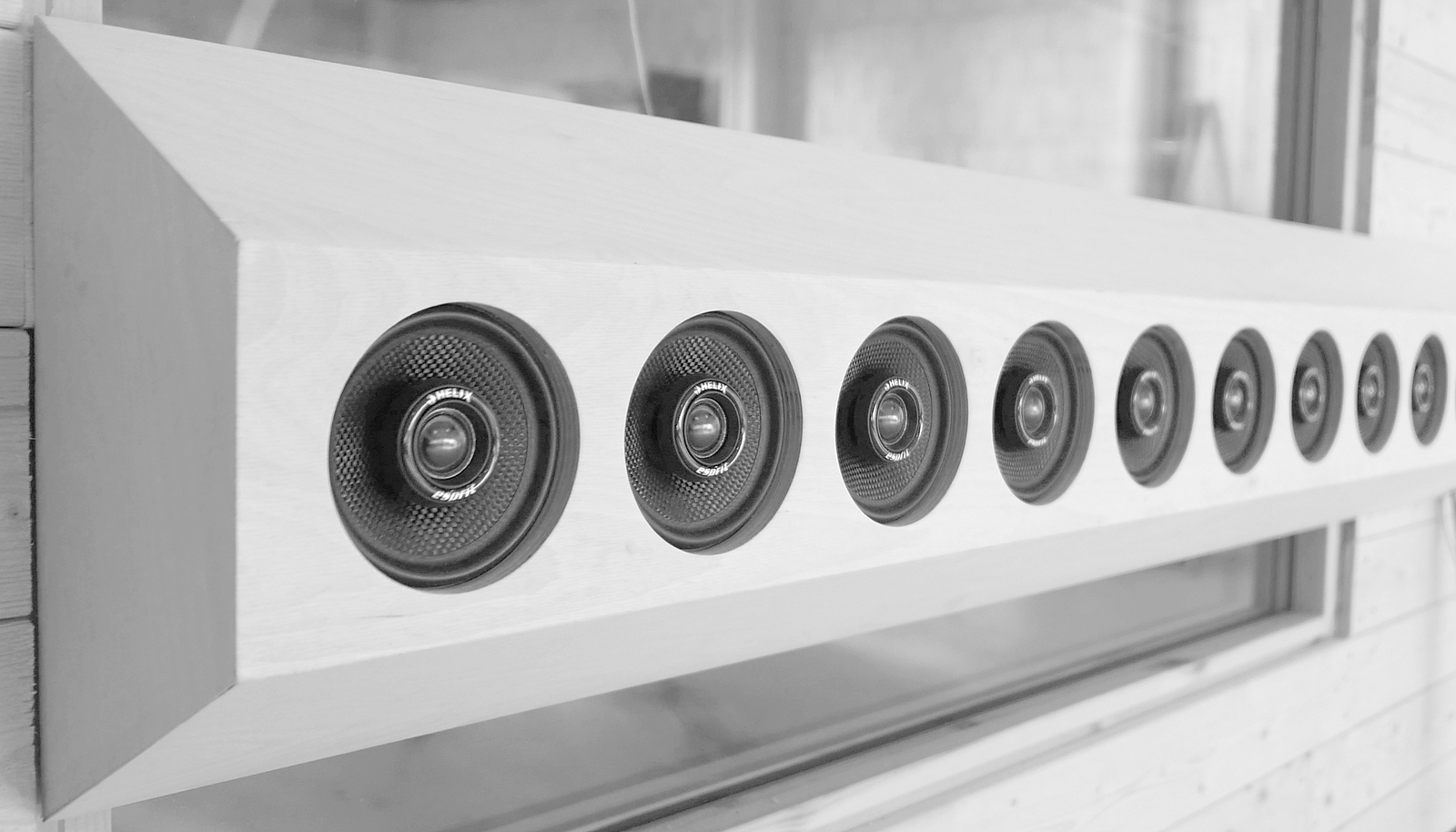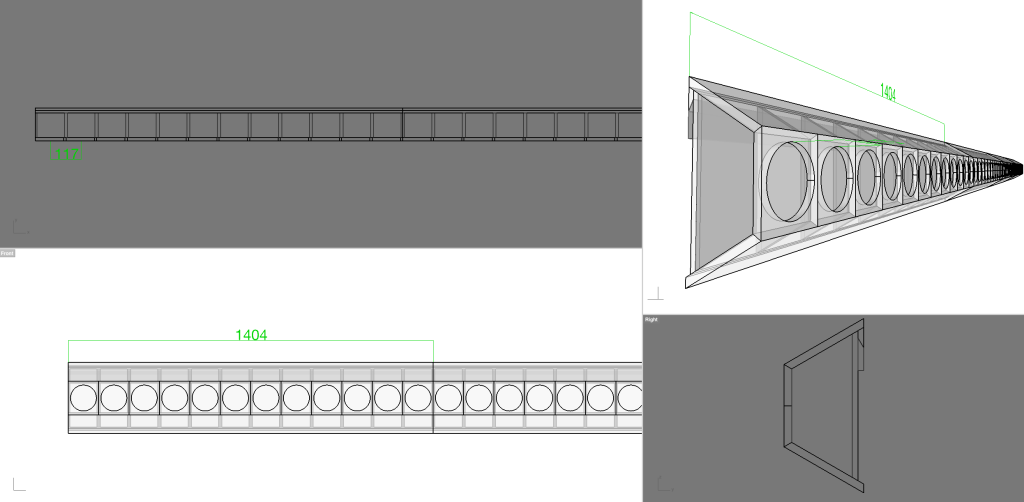As far as many go, we’ve got 48. Obviously we’re not pushing any limits on numbers here, but we’ve made a great sounding loudspeaker array which is 5,4 metres long with 48 loudspeakers crammed together in a thight row. This is our first Wave Field Synthesis (WFS) setup and it most certainly won’t be the last. We are already making a new one for our lab, and the one in the picture above will be permanently installed in the Romsdal museum’s new exhibition in Molde.
Why
WFS is basically a means to reproduce an acoustic environment for real, and for the time being it is the way to go if a true 3D sound experience is what you are after. For the museum, the basic idea is to steer the associations of the visitors to the coast line of Romsdal. The WFS will be coupled with visuals, and the audience is encouraged to explore the visuals by moving around in the sounding space.
Design

WFS close up.
The museum is all wood and has this excellent, warm quality that make you want to stay a little longer just because it feels good to be there. So imagine a nice, really tall wall, all wood, all glory and marry this with 48 speakers in a row. To blend harmoniously into this shrine, the speaker array was subject to both strict functional parameters as short distances between the loudspeakers and desired volumes for the enclosures, as well as great, yet subtle aesthetics.
Why not
There are two main challenges with WFS, one is cost and the other one is space. This is where many comes in. To faithfully (re)create an acoustic front you’ll need a whole lot of speakers and the cost adds up faster than you can say square meters. We are working on this issue, and I think we’ll make good progress during next year.
We want to contribute to great audible experiences in public spaces as much as we can, and by investing lots and lots of time in system design we’ll get there anytime soon.
For the technically minded
In our setup we’ve used Helix speakers, Parasound 12 channel amplifiers, Neutrik XLR plugs and Amphenol RCA plugs. We use a Motu 24AO AVB audio interface, and install everything pretty close to the speaker array to minimise the cable salad. The computer will be installed in a technical room to keep everything nice and tidy.
Speaker cabinet like this:
Location recording like this:
Anders relies on WFSCollider for the sound design. Other than that we make software for testing as we see fit.
Interaction and visuals are done with openFrameWorks and Max7. Keywords: computer vision, shaders, infrared network camera, open sound control.

